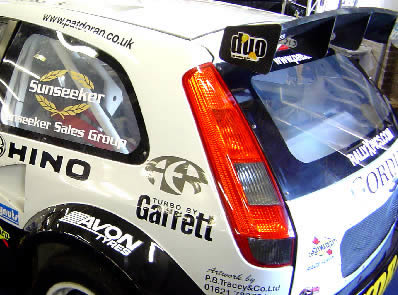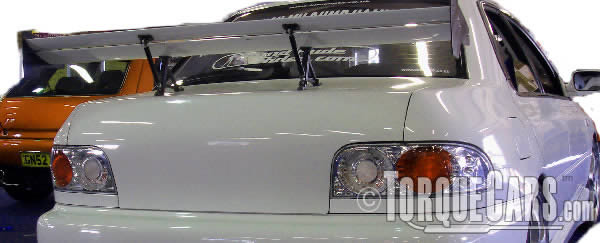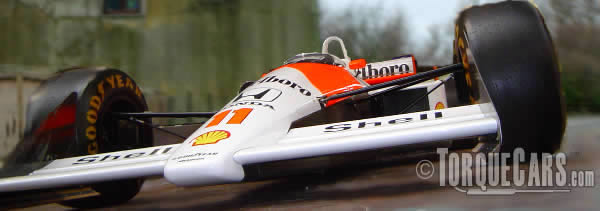Adding spoilers and wings for aerodynamic enhancement
"You Spoiler all my fun."
 How do spoilers work? Firstly we need to explain the difference between a spoiler and a wing.
How do spoilers work? Firstly we need to explain the difference between a spoiler and a wing.
Spoilers are generally closer to the body of the car and help diffuse the air.
Wings are mounted much higher up and have an aerodynamic effect of creating downforce.
Wings work like an upside down airplane wing. So how does an airplane wing work then? Torquecars now take a complex subject and simplify it (obviously there are many, many complex factors to take into account but we are dealing with the basic principles of wing and spoiler design here and discussing whether it has a beneficial effect on a road cars performance).
In its simplest form fast moving air creates pull if the other side of an object is subject to slower moving air.
To test this theory take 2 sheets of paper and hold them between your thumbs and little fingers so there is a gap between the sheets of about 1 inch. Then blow between the 2 sheets and you will notice that they pull together, which is not actually what you expect to happen. The fast moving air creates a low pressure region between the paper causes them to pull together.
So to create lift or down force you need air moving faster on one side of the aerofoil than on the other creating a pull towards the fast moving air stream. Obviously on a car you will not want a airplane wing so we use a simple 2 deck deflection to create the down force required.
The angle of attack or deflection will have a bearing on the amount of down force generated, the larger the angle the more down force but the price you will pay is increased drag. Most wings have a two angled surface creating a two stage deflection forcing the air over the wing to take a shorter route than the air going under the spoiler.
Thinking about the principle of spoilers and wing design ie: making the air travel further on one side than on the other, either by increasing the surface area on one side making the air travel further or by creating drag underneath to slow up the air. Brings us to look at the whole car and its effect on down force/lift.

If you look at the typical shape of a car the air will travel further and faster over the top of the car than it does underneath, this creates lift. Opening a sunroof at speed can make this problem even worse. So, an unmodified car, travelling at track speeds becomes very unstable and dangerous effectively losing grip, traction and control.
Cue the Coanda effect (a flow of liquid or air will follow the surface it is running over, try putting the side of a cup under a steady trickle of water and see what happens to the flow after it leaves the curve of the cup!) So once deflected the stream of air will continue on the deflected course after the end of the spoiler. Already we start to realise that just sticking a spoiler on the back of the car is not addressing the whole issue of aerodynamics.
If you imagine the car as a see-saw when you press down on the rear the front will lift slightly. When you fit a spoiler to the rear you have to expect that at higher speeds the front of the car will become lighter. In a front wheel drive car this is very undesirable, in a rear wheel drive car you still need the front wheels to steer so although traction is improved a degree of lift at the front is undesirable.
To counter the front lift you can fit front splitters, and front and rear skirts, which create down force at the front of the car and control the amount of air rushing under the car to create down force. When you start redirecting the air rushing over the car you will create an amount of drag which will rob you of speed and economy so there is a fine line between an efficient spoiler and wing design and an inefficient one.

Sometimes in Formula 1 and other motorsports you will have noticed spectacular crashes where the car has lifted due to a bump and the spoilers have effectively helped the car to get airborne and crash. Some cars generate more down force than they weigh creating the possibility of driving upside down on the roof of a tunnel (aside from the logistics of how you get it there in the first place.)
The best wings are adjustable, allowing the driver to set his preferences to the track conditions. For example a slow track with many bends will need a different setup to a fast track with plenty of straights. They also are mounted high up on the rear so they have an effect on the air flowing over the car. Vertical slats in the spoiler help to increase a cars straight line stability, something you see in motorsports spoilers.
Side skirts and sills help to cause the air moving under the car to move faster creating down force and enhancing cornering stability. For the best effect TorqueCars recommend that you do not just go out to the 'chavs n tarts' part catalogue and order a spoiler with pretty stickers.
Instead go to a proper motorsports tuner and get a rear wing specked up to your car and your requirements. A single rear spoiler is a pointless addition as a performance enhancement as you need to address the nose of the car, get some suitable sills and have the underneath of the car designed to create down force as well.
Wings can provide down force at speeds of around 50mph but it's not until about 70mph that this becomes significant and offers a benefit to the handling of a car. Spoilers can help to reduce drag on a car but are little more than cosmetic add ons.
So to summarise, a spoiler on the back of a car only addresses part of the issue of down force, it needs to be mounted as high as possible, it will also create drag robbing you of fuel economy and is only effective providing down force at speeds you will typically use on a track. To discuss aerodymics and the principles of wing design in more detail, please join us in our friendly car chat forums.
If you liked this page please share it with your friends, drop a link to it in your favourite forum or use the bookmarking options to save it to your social media profile.
Check out TorqueCars new YouTube channel, and see their awesome new content...
Feedback
Please use our forums if you wish to ask a tuning question, and please note we do not sell parts or services, we are just an online magazine.
Help us improve, leave a suggestion or tip
